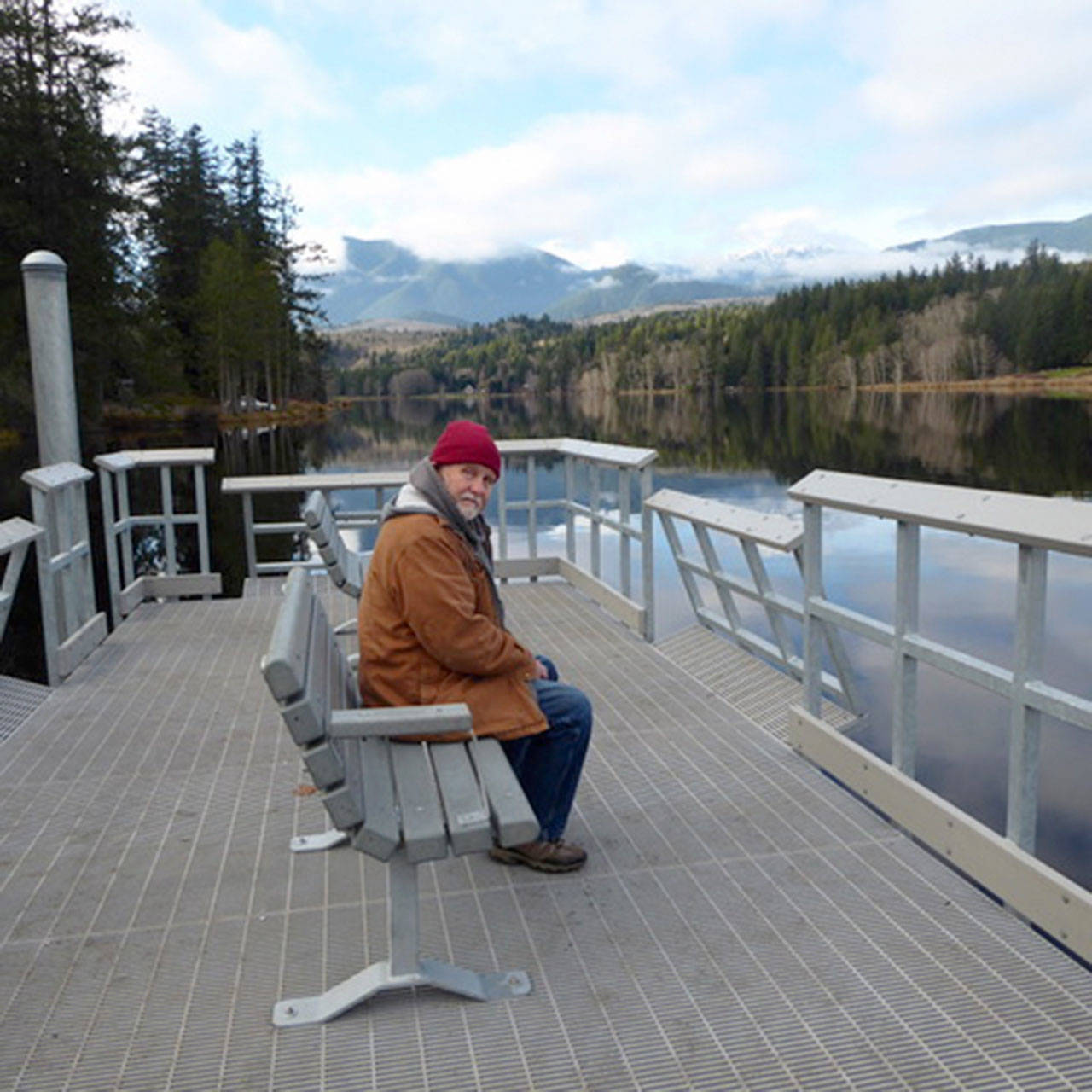CAUGHT BY SURPRISE during public comment on coastal steelhead fishing options at the state Fish and Wildlife Commission hearing last Friday, members of the Commission’s Fish Committee will be briefed and take additional public comment on the steelhead restrictions rolled out earlier this week during a Zoom meeting today from 1 p.m. to 3 p.m.
The link to the meeting registration is tinyurl.com/PDN-Fish Committee. The public also can call in to hear the meeting at 877-853-5257 with webinar ID 976-1472-6756.
Fish and Wildlife Commission Chair Larry Carpenter and members Dave Graybill, Don McIsaac and Bob Kehoe will hear about “long-term trends, 2020-21 forecast, management actions to meet conservation objectives and fishing opportunity” from Fish Program staff.
Carpenter was none too pleased to hear of the discussion of the then-potential coastal steelhead fishing restrictions, which were ultimately approved Tuesday and will take effect Monday.
The restrictions are intended to keep recreational fishing impacts low in the face of low projected wild steelhead returns across a number of coastal rivers and streams but also target river systems that are productive such as the Quillayute, which is forecast to meet escapement goals by 3,376 wild steelhead this winter and spring.
The restrictions outlaw fishing from a floating device on coastal rivers from the West End to Willapa Bay, mandate the use of selective gear rules which prohibit bait, including scent or scented materials and require the use of only one single-point barbless hook, along with the release of all wild rainbow trout.
“I certainly understand the conservation piece, and I also understand the rural economics piece,” Carpenter said at last week’s commission meeting. “But what I really don’t understand, [Fish and Wildlife Director] Kelly [Susewind] and [state Fish Program Manager] Kelly [Cunningham], is that we were not informed about this.”
That sentiment has been expressed by fishing guides who were shocked at the timing of potential steelhead restrictions released in late November and who collectively stand to take a huge financial loss due to canceled fishing trips this season and potentially for seasons to come.
No decisions will be made at the meeting.
A full list of the rivers and streams affected is available at tinyurl.com/PDN-SteelheadRules.
Leland fishing pier
The day-use portion of Lake Leland County Park near Quilcene has officially reopened to the public with a brand-new fishing pier installed as part of a Department of Fish and Wildlife project.
The $325,000 project was funded by a grant from the state Recreation and Conservation Office’s Washington Wildlife and Recreation program.
The project replaced the old wooden fishing dock with more durable materials. A new vault toilet, a re-grade of the road and parking lot and renovations of the trail along the shoreline for bank anglers also are part of the project.
Quilcene’s Ward Norden kept me appraised of the project’s status and liked what he saw of the new fishing pier during a recent outing.
“It is much wider than the old pier and extends out in the lake about another 20 feet, which should improve fishing opportunities,” Norden said.
Beachcasting
Hatchery steelhead also return to other rivers and streams in Puget Sound, and the season for beachcasting for those fish is underway.
Norden said Whidbey Island spots such as Bush and Lagoon points across from Port Townsend provide the more popular beaches to attempt a cast for these migrating fish, but there’s no reason not to give Jefferson County beaches a shot.
In Marine Area 9 (Admiralty Inlet), anglers are allowed to keep two hatchery steelhead. Potential beach locations include Point Wilson at Fort Worden State Park in Port Townsend and Marrowstone Point at Fort Flagler State Park on Marrowstone Island.
I’ve always thought the Portage Canal between Indian Island and the mainland also could be an option for fish seeking a shortcut route into Puget Sound, and there is access at Indian Island County Park.
“Beachcasting for steelhead is one of our easiest outdoor activities to participate,” Norden said. “All it requires is a 7- to 9-foot spinning rod, a reel loaded with 10-pound line and some basic steelhead terminal gear. All that terminal gear includes is a three-way swivel, some 10-pound leader material, a half-ounce bank sinker, 2/0 hooks, a size 4 orange or orange/chartreuse Spin/Glo [lure] and a 4-inch orange or pink vinyl trolling squid.
“The sinker is attached to the swivel with a short dropper. The hook is tied to a 2- to 3-foot leader with the squid covering the hook and the Spin/Glo in front of the squid.
“Why a steelhead would hit such a weird combo remains a mystery, but it certainly works out in the salt water. This whole setup needs only be cast a few yards because the steelhead migrate along the beach in only a few feet of water depth. Just cast and retrieve.”
No razor digs
Pacific Ocean beaches will remain closed to razor clam harvest until at least January after test results on ocean beaches indicate levels of domoic acid that exceed the threshold set by state public health officials for safe consumption.
The levels of domoic acid also are affecting recreational crabbing along the coast with crabbing now closed from the Queets River to the Columbia River.
________
Sports Reporter Michael Carman can be contacted at 360-406-0674 or mcarman@peninsuladailynews.com.

